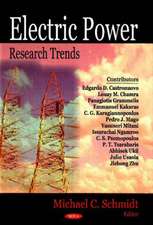U.S. Solar Photovoltaic Manufacturing
Autor Michaela D. Platzeren Limba Engleză Paperback
Preț: 81.74 lei
Nou
Puncte Express: 123
Preț estimativ în valută:
15.64€ • 16.27$ • 12.91£
15.64€ • 16.27$ • 12.91£
Carte disponibilă
Livrare economică 25 martie-08 aprilie
Preluare comenzi: 021 569.72.76
Specificații
ISBN-13: 9781477641668
ISBN-10: 1477641661
Pagini: 34
Dimensiuni: 216 x 279 x 2 mm
Greutate: 0.1 kg
Editura: CREATESPACE
ISBN-10: 1477641661
Pagini: 34
Dimensiuni: 216 x 279 x 2 mm
Greutate: 0.1 kg
Editura: CREATESPACE
















